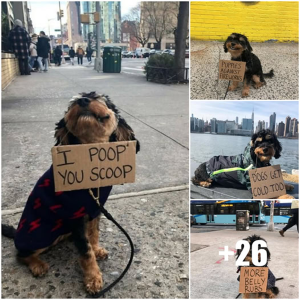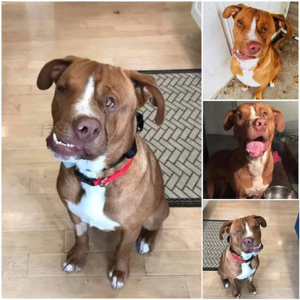The Angry Dog: The Role of Restraints and Harnesses in Canine Behavior Management

In a world where pets, particularly dogs, are integral members of families, understanding their behavior is crucial for maintaining a harmonious environment. Dogs are known for their loyalty, playfulness, and protective instincts, but they can sometimes become aggressive. An angry dog, whether due to fear, territorial instincts, or stress, can pose a danger to both themselves and others. This is where proper restraints and harnesses come into play. They not only ensure safety but also offer a way to manage and modify negative behaviors.
The Causes of Aggression in Dogs
Before delving into the solutions provided by restraints and harnesses, it is essential to understand why a dog may become angry. Aggression in dogs can be triggered by various factors. Some of the most common reasons include:
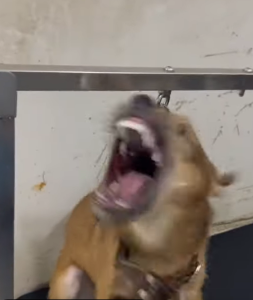
- Fear and Anxiety: Many dogs exhibit aggression when they feel threatened or frightened. This could be in response to loud noises, unfamiliar people, or new environments.
- Protective Instincts: Dogs are territorial animals. When they feel their space or loved ones are being threatened, they may become aggressive to defend their home and family.
- Pain and Illness: Sometimes a dog may react aggressively because it is in pain or discomfort. A dog that has been injured or is ill may lash out as a way of communicating its distress.
- Lack of Socialization: Dogs that have not been adequately socialized, particularly during their formative months, may find interactions with people or other animals overwhelming, leading to fearful or aggressive behavior.
- Frustration: Dogs that are not properly exercised or mentally stimulated may become frustrated, leading to aggression. This is particularly common in active breeds or dogs left alone for extended periods.
Understanding the root cause of aggression is vital before attempting to modify behavior. However, when a dog is exhibiting aggressive tendencies, managing its behavior safely is paramount. This is where physical restraints and harnesses play an important role.
The Role of Restraints and Harnesses
When dealing with an angry or aggressive dog, keeping both the dog and others safe is of utmost importance. Restraints, such as leashes, muzzles, and harnesses, help to ensure that the dog cannot harm itself or others while its behavior is being addressed.
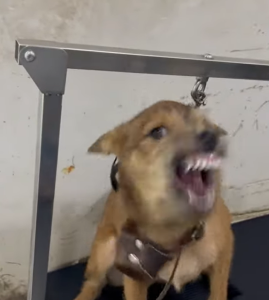
1. Leashes and Harnesses: Controlling Movement
A leash and harness combination is one of the most effective tools for controlling a dog’s movement, especially in stressful or unpredictable situations. A harness is often recommended over a collar, particularly for more aggressive or strong dogs, as it distributes pressure across the dog’s chest rather than around its neck. This is especially important for dogs that might try to pull or lash out.
Harnesses can be designed with additional control mechanisms, such as front-clip designs, which discourage pulling and allow for better management of the dog’s behavior during walks. When an angry dog is restrained by a harness and leash, it can still move, but its movements are controlled, making it easier for the handler to maintain safety and avoid escalation.
2. Muzzles: Ensuring Safety for All
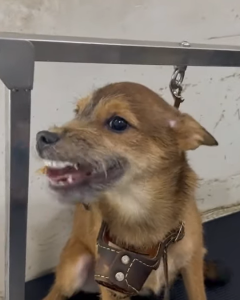
For more aggressive dogs, particularly those that have a history of biting or lunging at others, a muzzle can be a useful tool. Muzzles come in various designs, but they all share the goal of preventing the dog from biting, while still allowing it to breathe and drink water.
It’s important to note that muzzles should never be used as a permanent solution to aggressive behavior but rather as a temporary measure to prevent injury while behavior modification techniques are being implemented. Muzzles can also be used in conjunction with training to help the dog gradually become more comfortable in situations that may trigger aggression.
3. The Benefits of Restraints in Training
Using restraints is not only about preventing harm; it is also about creating an environment where the dog can learn and adjust its behavior. A dog that is restrained but still able to interact with its environment can be gradually desensitized to whatever is causing its aggression. This is particularly useful when combined with positive reinforcement techniques, where the dog is rewarded for calm behavior.
Training a dog with restraints requires patience and consistency. A dog that is anxious or fearful may respond negatively to restraints initially. Therefore, it is essential to pair the use of harnesses or muzzles with proper training, socialization, and care. Over time, the dog will learn that calm behavior leads to positive outcomes, reducing the need for physical restraints in the future.
Ethical Considerations
While restraints such as harnesses and muzzles are invaluable in certain situations, their use should always be accompanied by careful consideration of the dog’s well-being. Over-reliance on physical restraints can lead to stress or anxiety for the dog, potentially worsening the problem. Restraints should be used as part of a broader behavioral training program that includes positive reinforcement, regular exercise, and, when necessary, professional intervention from a veterinarian or animal behaviorist.
Conclusion
An angry dog is a challenge, but with the right approach, its behavior can be managed safely and humanely. Restraints like harnesses, leashes, and muzzles play a vital role in controlling an aggressive dog’s behavior, allowing owners to keep everyone safe while addressing the root causes of aggression. The goal is always to modify the dog’s behavior through patience, training, and positive reinforcement, ensuring that the dog becomes a well-adjusted, happy member of the family. As with all aspects of pet care, the key is to balance safety with compassion, creating a solution that works for both the dog and its owners.



